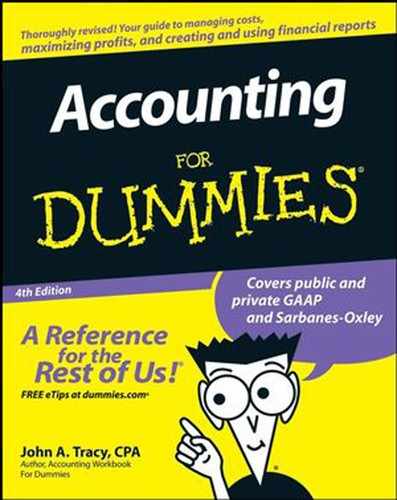13.3. Comparing Private and Public Business Financial Reports
NOTE
As I explain in Chapters 2 and 12, the accounting profession is presently considering whether private companies should be relieved of the onerous burdens imposed by certain accounting and financial reporting standards. The main, almost exclusive focus of the standard setters over the last three decades has been on the accounting and financial reporting problems of large public companies. There seems to be a consensus that many of these complex standards are not relevant to smaller, private businesses — and that the users of their financial reports are not well served by the standards. So far, there has not been a lot of concrete progress in identifying which particular standards should not apply to private companies. But it's still early in the game, so stay tuned.
Although accountants are loath to talk about it, the blunt fact is that many (perhaps most) private companies simply ignore some authoritative standards in preparing their financial reports. This doesn't mean that their financial reports are misleading — perhaps substandard, but not seriously misleading. In any case, a private business's annual financial report is generally bare bones. It includes the three primary financial statements (balance sheet, income statement, and statement of cash flows), plus some footnotes — and that's about it. I've seen private company financial reports that don't even have a letter from the president. In fact, I've seen financial reports of private businesses (mostly very small companies) that don't include a statement of cash flows, even though this financial statement is required according to financial reporting standards.
|
Many publicly owned businesses present very different annual financial reports to their stockholders than their filings with the SEC. A large number of public companies include only condensed financial information in their annual stockholder reports (not their full-blown and complete financial statements). They refer the reader to their more detailed SEC financial report for more specifics. The financial information in the two documents can't differ in any material way. In essence, a stock investor can choose from two levels of information — one quite condensed and the other very technical.
A typical annual financial report by a public company to its stockholders is a glossy booklet with excellent art and graphic design, including high-quality photographs. The company's products are promoted, and its people are featured in glowing terms that describe teamwork, creativity, and innovation — I'm sure you get the picture. In contrast, the reports to the SEC look like legal briefs — there's nothing fancy in these filings. The SEC filings contain information about certain expenses and require disclosure about the history of the business, its main markets and competitors, its principal officers, any major changes on the horizon, and so on. Professional investors and investment managers definitely should read the SEC filings. If you want information on the compensation of the top-level officers of the business, you have to go to its proxy statement (see the sidebar "Studying the proxy statement").
Studying the proxy statementPublic corporations solicit their stockholders' votes in the annual election of persons to sit on the board of directors and on other matters that must be put to a vote at the annual stockholders' meeting. The communication for soliciting votes from stockholders is called a proxy statement — the reason being that the stockholders give their votes to a proxy, or designated person, who actually casts the votes at the annual meeting. The SEC requires many disclosures in proxy statements that are not found in annual financial reports issued to stockholders or in the business's annual 10-K. For example, compensation paid to the top-level officers of the business must be disclosed, as well as their stock holdings. If you own stock in a public corporation, take the time to read through the annual proxy statement you receive. |

